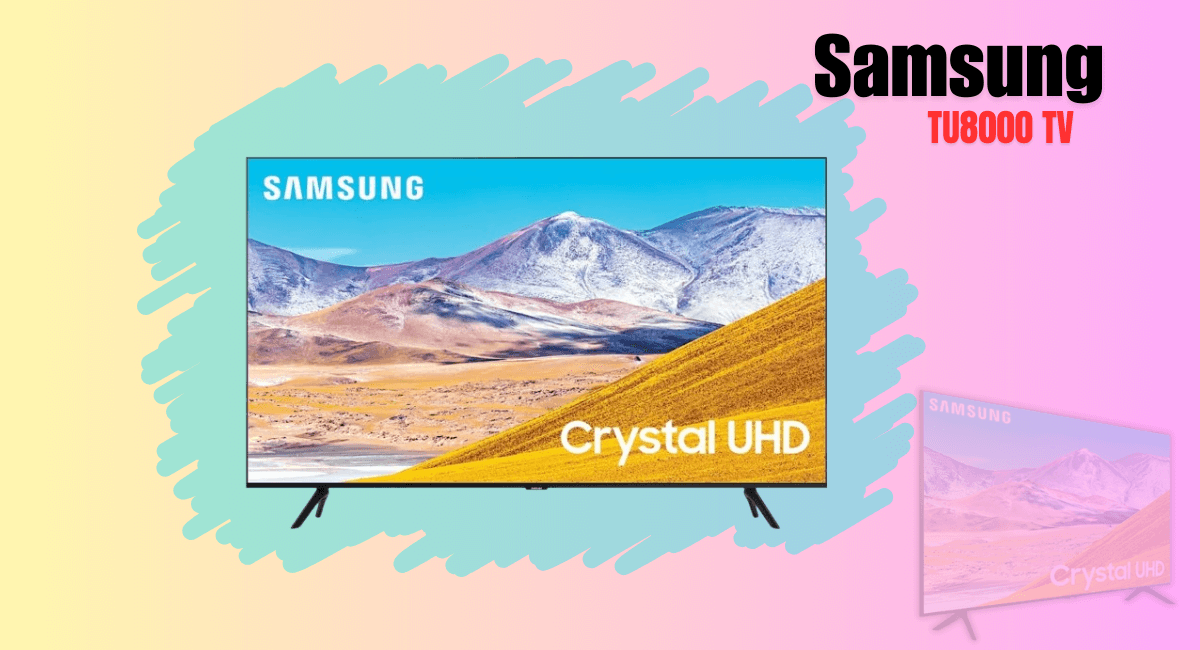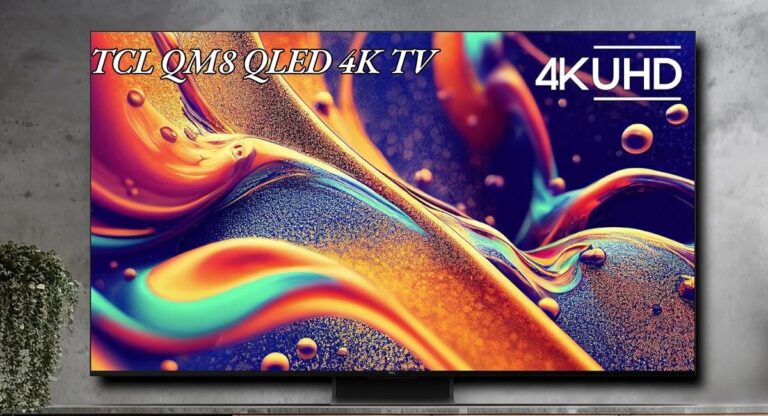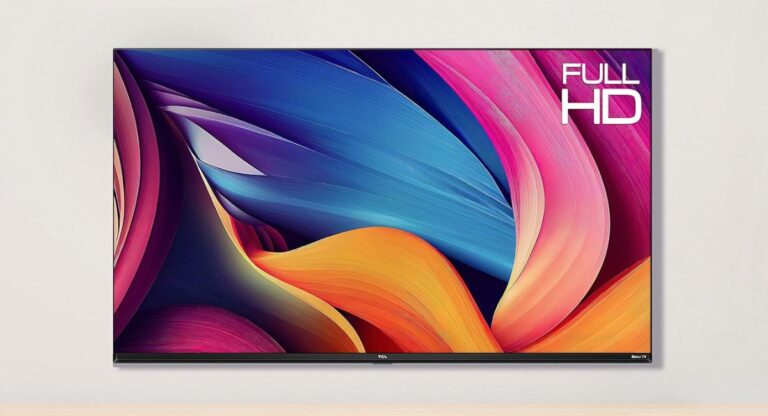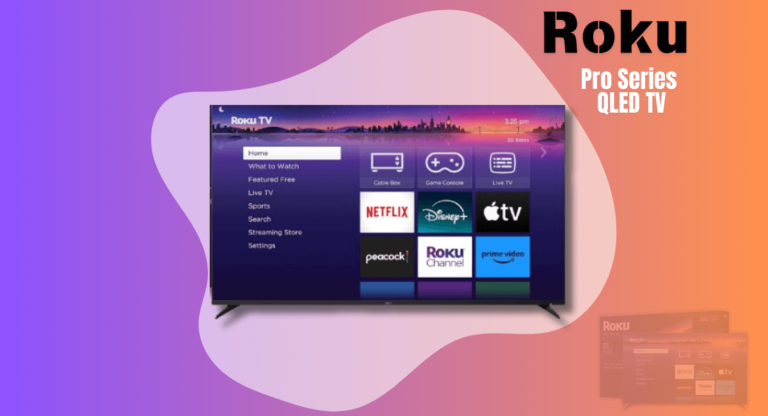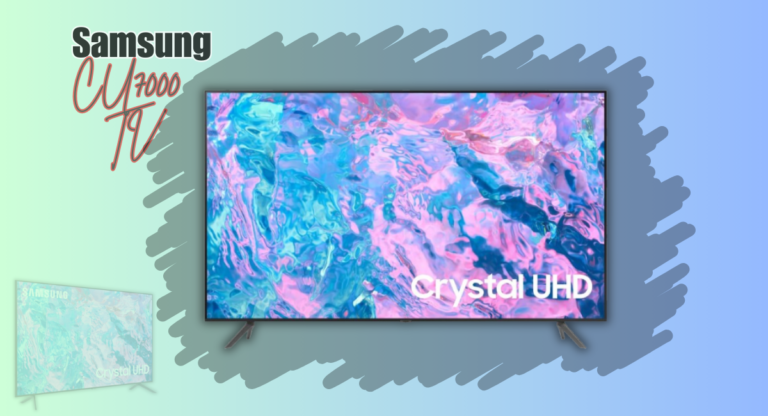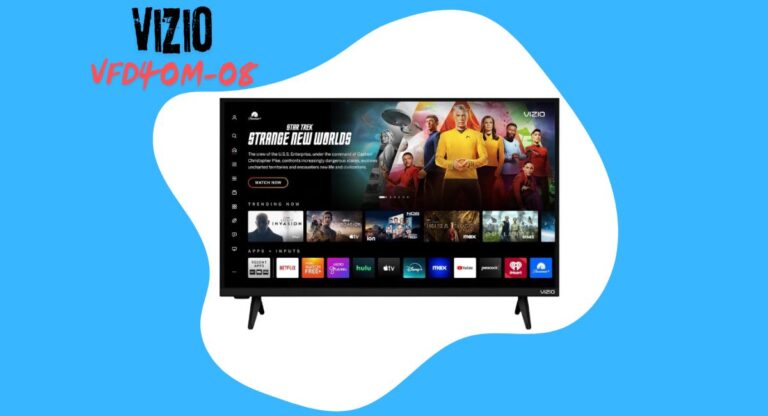Samsung TU8000 TV Review
After spending weeks testing it, I can finally tell you what I have experienced with grabbing on the Samsung TU8000 TV. This TV has been placed at my living room and I have had a lot of time looking at its capabilities and therefore, determining whether it is worth the or not.
From the looks of the television, its designs to its smart capabilities, I have tried out every aspect in order to give a fair and reasonable appraisal. Are you the kind of person that watches all types of movies, goes on about computer games, or do you just admire quality television pictures? This review is for you. In the next review, I’m going to focus on both pros and cons of Samsung TU8000 which will assist you in determining whether to purchase this TV for your home.
Reasons to Buy
- Sharp, detailed 4K picture
- Good upscaling
- Superb smart TV platform
- Solid motion handling
Reasons to Avoid
- Limited connectivity
- Lacks brightness for the best HDR
- Narrow viewing angles
- Annoying design
Design and Aesthetics
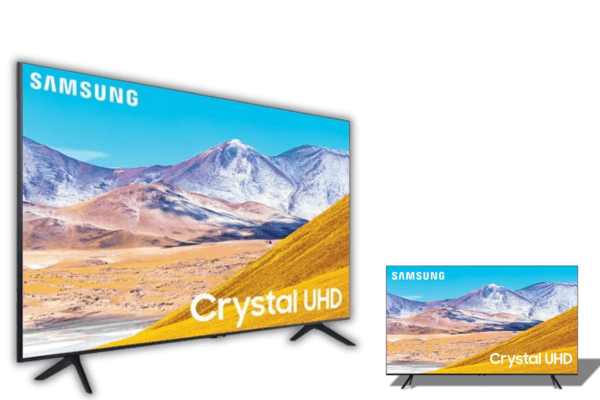
The Samsung TU8000 TV appears to be a great value budget TV and is unique in design in its category. It looks like the Samsung Q60/Q60T QLED which also has a smart design, only that it leans a bit towards the supermarket. The upper side of the TU8000 has slightly darker gray borders.
TU8000 is almost totally flat screen, no bezel tv, easy on the eyes and clean, simple and straightforward design. The Borders measure the inner dimensions of the screen and are just 0.35 inches 0.9 cm to fit in the picture for an optimum without taking the immersion feeling.
The stand design of the Samsung Class Crystal UHD TU-8000 Series is similar to the stand for Samsung RU7100. The feet are inderal to the television for an elegant presentation. The stand adequately supports the television set although one may notice some wobbling when in use like TCL Class S4 4K LED Smart TV and the LG UR9000 TV. The stand’s dimensions on the base for a 55 inch TV measure 40.2 inches x 9.9 inches in base therefore, one must provide for enough space in width.
Available with VESA 200×200 in case you decide to mount the TV, wall mount unlike Samsung AU8000 TV since it comes with a VESA 400×300. What could be termed the back of the TV is all plastic and has a fine texture to it, somehow enhancing a degree of class. Simple cable management clip is provided on the feet which is a good thing, although it is very basic.
Another unique feature found in the TU8000 is that the inputs are easily managed since they are of the side facing type. This is a great improvement over previous designs as it makes it easy for a user to link up devices.
Materials and Build Quality
As the Samsung TU8000 TV forward model offers screen hours, it does very well with build quality, especially considering its economy segment. Being plastic, one would in all expectations think that it would be weak, but it surprisingly isn’t. Unlike other plasticity designs that tend to be rather weak, the TU8000 can withstand everyday wear and tear.
A single such element, which brings so much attractiveness tactically, is the design. The panel edges are neat and smooth with no large gaps and therefore this television looks even more impressive. This uncomplicated structure makes it more elegant looking than it is and would allow it to easily blend in with a typical living room or other home entertainment installations.
As much as the TV has been designed to be quite durable, it can be pointed out that there is a bit of wobbling that is observed whilst the television is placed on the stand. This is due to the fact that the stand design does the job, but it does not do the job quite as well as a stand built for stability would do. This is not a show stopper, but it is something worth noting, especially if there are pets or small kids who may run into it.
I observed that the quality of the materials and the build of the Samsung TU8000 is impressive considering the price point. Plastic is not very firm, but it has not affected the sturdiness of the product, and quality finish has been maintained. In case you need that kind of TV, the TU8000 gizmo is a good option without compromising on the strength and contemporary aspect.
Picture Quality
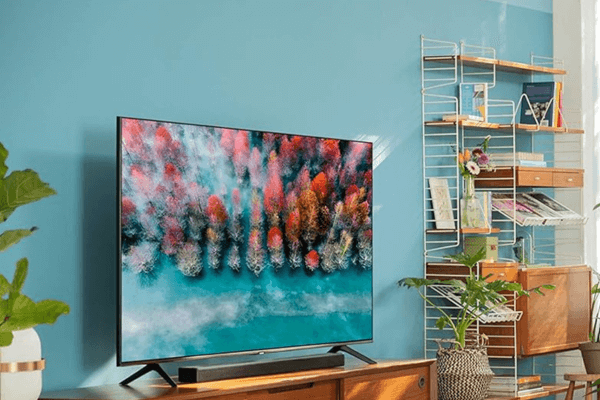
The Samsung TU8000 TV has a rather unsatisfactory picture quality and one wonders why on earth this is so. It is able to reproduce extremely deep blacks, especially in dark rooms, thanks to the native contrast ratio of 6421:1. However, it is worth mentioning that the absence of local dimming does decrease the abilities that the contrast could otherwise reach. In its absence, the TV barely manages to improve the contrast norm that it already worked to achieve, even if the Angular range shoots up.
As far as brightness is concerned, the Samsung UHD TU8000 series lacks at the SDR and the HDR levels. The SDR peak brightness gets mediocre levels which is an extreme shortcoming in bright rooms where glare cannot be avoided. The global dimming feature, otherwise known as frame dimming, significantly reduces small highlights in dark scenes. This results in filtered moments that were dark appearing bright though without a slight nuance.
Picture calibration is a very important aspect in viewing motion pictures. Therefore, changing to the ‘Movie’ Picture Mode and setting the Gamma at ‘2.2’ and brightness to maximum, results in a much clearer image. Nevertheless, this is still not too bright enough for the enemies of glare too.
As for HDR, this situation is no better either. The HDR peak brightness of the Samsung TU8000 TV is maintained lower than the SDR one, and small highlights in dark images are not properly delivered due to the extreme frame dimming.
Consequently, the overall image is on the darker side, which may not always be in line with what the creators had wanted to achieve. Although the ‘Movie HDR’ Picture Mode with advanced settings does include an option, advanced settings can produce a peak brightness of 344 cd/m², still most of the scenes may be shown worse than was expected.
For the gamers out there, Game Mode adjusts brightness for the most part and ends up brightening most of the scenes watching. It should be noted though that that feature increases the frame dimming effect thus rendering small highlights even darker. If you want the best smart 4k TV for gaming, so you must try VIZIO VFD40M-08 or Roku Select Series 4K TV.
On the subject of reflection handling, this Samsung 55” 4k tv is quite a performer as well. Its soft coat semi-gloss finish helps reduce the glare from the screen while it is not the best tube guess when direct sunlight is present. This television is not recommended for areas where it’s anticipated that a room has a lot of bright surrounding lighting or bright natural lighting as it has lower peak brightness and glare cannot be avoided.
The Samsung TU8000 TV appears to be quite versatile when it comes to content provided like the LG UR9000 TV. 720p content is quite up to the mark and artifacts cannot be seen. DVDs and other low-resolution 480p videos are up-scaled seamlessly. 1080p Blu-ray content comes close to those native 4K. And about native 4K, this also looks great – should not have any serious issues which means that it is ideal for HD watching.
Sound Quality
After having used the Samsung TU8000 TV for a while, I thought it best to put down my observations regarding the sound quality of the product as per my own tests and usage.
Taking into consideration different parts of the T.V. like the speaker, it was quite easy to understand all the dialogues of every action. This I experienced whether it was in a movie, T.V. Series or watching news. For viewers, this equalized audio profile may help as it eliminates distracting background sounds, which makes it easy to concentrate on just the speech. It really aids comprehension of the dialogue at a moderate volume level, without needing to increase the volume levels unnecessarily.
That being said, I found that the bass was somewhat pale and those who are fans of deep rumbling bass may even be a little disappointed. The frequency extension tops out at 84.76 Hz meaning when it comes to the delivery of the lower end sounds, I find them quite disappointing. If you have soft spots for heavy and loud action soundtracks and deep bass in music, then the T.V. 8000 might come off as somewhat punchless and not very ecstatic. It’s not bad, but it surely does not have the wow punch that you might expect of a television set in this kind of range.
With regards to loudness, the Samsung 4k TV systems goes to a maximum of 87.4 dB SPL A-weighted sound level. For viewing most of the time in a regular-sized room, this was quite enough. The sound was adequate enough to occupy the room, but it wasn’t overdone. However, in sunnier rooms or bigger regions, you may find it does not go as high as you would like it to go. It is good enough for casual use, but this is not the best choice for those who want a more powerful audio experience from the box itself.
In one respect, which lasts a problem with the TU8000, is distortion. When I raised the volume up to approximately 80% of the maximum, the Total Harmonic Distortion (THD) was recorded at the rather tolerable 0.331 level. However, this was when the volume was at maximum level. From this level, the distortion and THD of this apparatus suddenly went up to 1.586. The audio quality here was troublesome as the sound became fuzzy and unclear, which was a bit annoying for me since I like watching TV at loud noise.
Use of such dynamic range compression by the TV means the use of breakout levels of 4.07 dB. Quiet sounds will still be heard while loud ones wouldn’t sound too piercing. This is handy in terms of making sure sudden noises do not damage the audience. Yet this takes away some excitement in the overall sound. The sound is also quite a bit improved, but still when compared to TVs that have advanced sound systems, a lacking depth is felt.
TU8000 also had an interesting attribute: how it deals with reflections. The semi-gloss screen surface works relatively well, but in brightly lighted rooms with windows most of the sound is usually lost in the glare. There are no concerning issues about this, though it is something worth bearing in mind if the area you wish to watch from is well lit with windows or lights that are electric.
Smart Features
The Samsung TU8000 4k smart TV also works on a somewhat modified version of Tizen OS (2020) with a lower set of capabilities. Even though this is the case, the interface is still self-explanatory and easy to operate. This separation of functions is the main reason that even inexperienced users can use all the options available and locate what they are looking for relatively quickly without having to undergo tough training. The animations were scaled back and that also enhances the use as I experienced during the daily usage.
Regarding smoothness, it is safe to say the operating system works on average. Every other thing works most of the time, been the switching of applications or menus doesn’t take long. For instance, if you want to select youtube, it usually takes approximately two seconds which is a reasonable time that makes it easy to access the content you prefer. This time also available in VIZIO M50QXM-K01 M-Series.
On the other hand, making some adjustments, such as changing the amount of backlight can take up to even 7 seconds. While this is not a problem in day to day activities, it does make some of those adjustments take a bit longer than other settings.
The Tizen OS on this 55” smart 4k TV has also plenty of advanced options which are one of its advantages like in Samsung CU8000 TV. This caters for both ordinary television watchers and the more computer literate users as they are able to adjust the TV settings to their preference. Be it picture adjustments, network management or apps installation, the advanced options menu has no limitations.
While carrying out the tasks, I faced a challenge with one of the common bug called Overscan. Luckily, there is a way also to solve this problem. This problem I solved by going into the aspect ratio menu and changing the settings to 16:9 and Fit to Screen. It is such a small annoyance when you are trying to achieve certain display settings and a resolution is within your grasp.
One of the concerns that some users may have is the inclusion of ads and suggested content curtain on the homepage and app store equally. Unfortunately, one doesn’t have a choice of opting out of these suggestions. That is to say that even when users want to see as little on their screens as possible, these users will have to put up with advertisements and suggestions about downloading applications that do not interest them. While this does not limit the functionality, it introduces a factor of unnecessary hustle on the part of the users.
In general, the usability of the Tizen OS on the Samsung TU8000 TV is rather commendable. Anyone can use the interface as it is forward rushing from the technology enthusiasts to the not-so-technology enthusiasts. A user has an easy time arranging the television as well as the several functions and this contributes to the general satisfaction of the device.
On most occasions, the smoothness of the OS can be termed as average; however there are times the OS will go below average. For the most part, most of the common tasks are well executed although some settings adjustments may take a bit of time and become annoying. However, these hitches do not in any serious way lower the satisfaction obtained from the process.
Connectivity and Usability
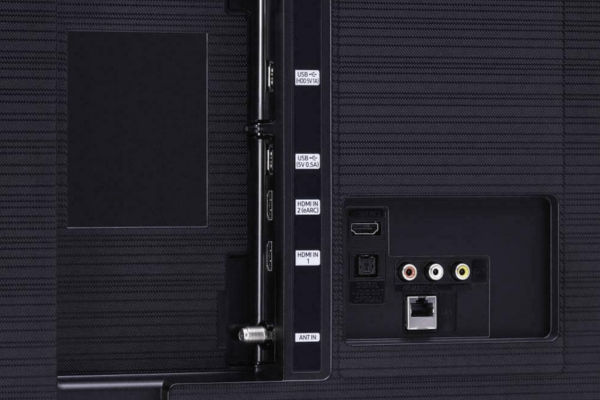
The new Samsung TU8000 TV has support for HDR 10, HDR 10 Plus and HLG which is quite essential for a better experience of HDR content. I noticed a very noticeable boost in the picture quality when I was watching compatible shows and movies. But the absence of Dolby Vision is somewhat disappointing, especially since many streaming platforms have content currently and have plans to center their content around Dolby Vision. This is something you should think about if you actively use this ecosystem.
The TU8000 clearly has the advantage when it comes to availing HDMI ports for use. It has three HDMI 2.0 full-bandwidth ports that increases its flexibility. I managed to connect my gaming console, sound system and streaming device all at once without any issues at all.
However, it doesn’t come with an HDMI 2.1 bandwidth which is becoming more crucial with next-gen gaming and high frame rates support. This means that if you are a hardcore gamer or have plans of future-proofing your setup concerning HDMI 2.1 features, you may find this TV a little insufficient.
There are two USB 2.0 ports that come with this Samsung LCD smart tv, however, it does not come with USB 3.0 provision which means transmitting large size media files or reaching speed devices will not be as fast as it would have been. It can be quite tedious, but not a deal breaker. However, for individuals that quite often connect external drives or other media devices, this might be a little uncomfortable.
The Wi-Fi support in the TU8000 is commendable as it has both 2.4GHz and 5GHz bands making it possible to stream quality contents without buffering. In the course of the tests, I was connected to both bands of the TV and while streaming 4K content, I didn’t experience any visible drops in the connection. It also has an ethernet port which is also good for smart TV apps since you can use it in place of wireless connections.
What impressed me was the HDMI eARC feature. With this feature, you can send high-definition and uncompressed audio to a compatible receiver which is good if you want to experience sound using a sound system. I have tried it with a soundbar, and the clarity was impressive when watching movies especially if there is background music.
However, not all is hunky-dory because there are no DTS audio formats supported by the television which is a let down especially for people who use DTS with UHD Blu rays There is also offering, a digital optical audio out which is a good substitute if you are using some of those old sound systems that comes without HDMI support.
Still, there is no 3.5mm audio output shared or RCA connectors therefore in case you have some of these ordinary sound devices, you will have to look forward to other connecting options attempting the unit. Limited Ports for Older Devices The TU8000 comes with one composite input, which means if you still have older devices that use component cables, you’ll have to settle for this single option. But it doesn’t come with any component input or DisplayPort therefore using older gaming consoles or multimedia appliances may be a bit limited.
The usability of the Samsung TU8000 TV is quite simple. If your devices allow it, then you can also use a TV remote to control external devices connected to your TV like soundbar or Blu-ray player with CEC (Consumer Electronics Control) feature. I found it very useful when I wanted to switch between the TV and sound systems when there were no other remotes to use. It was quite effective and added to the overall comfort of usage of the TV.
Final Verdict
This isn’t the TV for those who want the HDR to the fullest. The overall low brightness level and constricted color space of the TU8000, not to speak of the absence of Dolby Vision support, also makes the chances of this Samsung TU8000 TV coming anywhere close to presenting HDR contents properly a fantasy. Tendencies to overdo it in terms of settings changes to optimize that bit more have some justification, however, the image projected here will still not hold any of the strikingly obvious advantages that HDR offers.
Perfectly happy in this middle ground are those who wish for a good value TV at a sensible price and wish not to clash with the QLED range – Samsung’s 8 series fits this bill perfectly.
How did we test this model?
Our expert team conducted thorough evaluations of various smart TVs, including the Samsung TU8000. We set up each TV in a real-world home environment, assessing picture quality, sound performance, and smart features under different lighting conditions.
To gauge picture quality, we watched a range of content—from bright, colorful animations to dark, dramatic films—paying close attention to color accuracy, contrast, and motion handling. We also tested the smart platform, navigating through streaming apps, checking load times, and evaluating the user interface’s ease of use.
For sound, we listened to music and dialogue, noting clarity and volume levels. We also assessed the connectivity options, including Bluetooth and HDMI ports, and how well the TVs integrated with other smart home devices.
By using these comprehensive methods, we ensured our reviews reflect genuine user experiences, helping you make an informed decision on your next smart TV.

